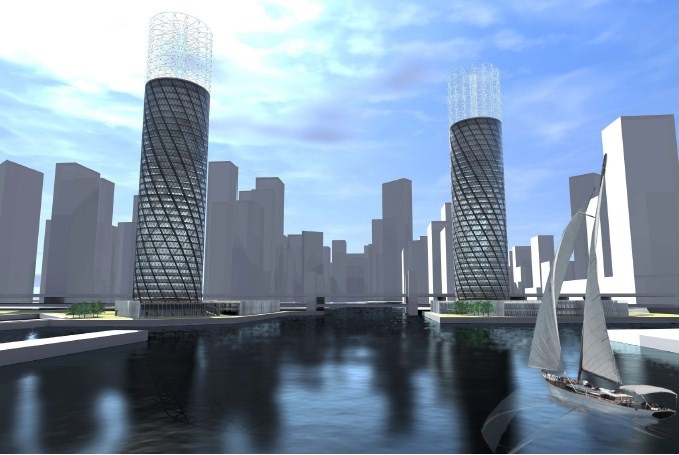
The cost of energy is changing the way that architects and owners look at building design. No owner wants a great looking space that is all but impossible to heat and cool. We see this all too often when “Form” dictates “Function”.
People love places with lots of light and a great view. Almost no one likes the sun’s glare and oppressive heat- especially when forced to sit or work in spaces enclosed by glass.
We also forget that the sun can be equally uncomfortable on bright and sunny winter days. yes, the space can be warmed by the winter sun, sometimes too much so, but night time and cloudy days can be a chilling experience.
It’s one of the great contradicitons in architecture that we spend lots of time and resources to open spaces up with glass only to be forced to close them back up again because of the sun. There has to be a way to strike balance.
“The Great Cover Up” usually involves window treatments and the suspects are always the same- “Form” and “Function”. It’s a predictable game of give and take- but which comes first?
Louis Sullivan, the “father of modernism” and the great skyscrapers, understood “function” always comes before “form”. To have it any other way would induce unwanted stress into the system.
Window treatments should have “form” – and that is often where the equation stops. When energy was cheap and the building’s occupants were an after thought this may have been acceptable- but never correct.
“Function” allows us to view window coverings as systems unto themselves where they are part of the building matrix not something simply added on.
Window coverings need to earn their keep in modern architecture. They should be both attractive and functional. The US Green Building Council has developed LEED criteria to achite this objective. With proper planning, funcitn and form can peacefully co-exist. read more

